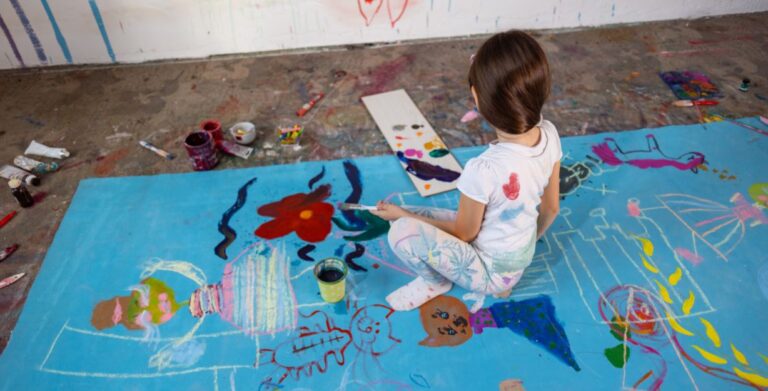What is Creative Writing in High School?

Creative writing is more than just putting words on a page. It’s about storytelling, creativity, and self-expression. In high school, students are given the opportunity to explore their imaginations and write stories, poems, plays, and other forms of narrative that allow them to break free from the boundaries of traditional academic writing.
Why Is Creative Writing Essential in High School?
Creative writing plays a critical role in high school education because it encourages students to think outside the box. It fosters creativity, promotes emotional expression, and enhances their ability to communicate effectively. High school is a time when students are developing their identities, and creative writing offers a safe space for them to explore their thoughts and feelings.
Encourages Imagination and Self-Expression
Creative writing allows students to express their thoughts and ideas freely, without the constraints of structured essays. This type of writing fosters imagination, helping students learn to think critically and creatively.
Boosts Emotional Intelligence
By engaging in creative writing, students can explore complex emotions and situations through the characters they create. This promotes empathy and emotional intelligence, skills that are useful both in and outside the classroom.
Enhances Communication Skills
Learning how to write compelling narratives can significantly improve a student’s ability to communicate. Whether it’s through dialogue in a play or imagery in a poem, creative writing teaches students how to convey ideas and emotions effectively.
Types of Creative Writing Taught in High School
In high school creative writing classes, students are introduced to various genres. Each type of creative writing serves a different purpose and offers unique challenges.
Fiction
Fiction involves creating stories from the imagination. Students learn to build worlds, develop characters, and craft plots.
Poetry
Poetry focuses on the aesthetic qualities of language. Students experiment with rhythm, rhyme, and figurative language to evoke emotion.
Non-fiction
Creative non-fiction allows students to write true stories in an engaging and narrative style. Personal essays, memoirs, and biographies fall into this category.
Playwriting
Playwriting involves writing scripts for theater. Students explore dialogue, stage direction, and character development.
Key Components of Creative Writing
Understanding the fundamental elements of creative writing is crucial for success in this discipline. These components include:
Plot
The plot is the structure of a story. It encompasses the events that make up the narrative, usually with a clear beginning, middle, and end.
Characters
Characters drive the story forward. They are the individuals who inhabit the world of the narrative, each with their own motives and development arcs.
Setting
The setting refers to the time and place in which a story unfolds. It helps create atmosphere and can significantly impact the narrative.
Dialogue
Dialogue involves the conversations between characters. It reveals their personalities, advances the plot, and makes the story more engaging.
Theme
The theme is the underlying message or moral of the story. It gives depth to the narrative and often reflects broader societal or personal issues.
Creative Writing vs. Academic Writing
Creative writing differs from academic writing in many ways. While academic writing is formal, structured, and focused on analysis or argumentation, creative writing is more fluid, imaginative, and centered on storytelling. However, both forms are vital, as they teach students different types of writing skills.
How High School Creative Writing Classes Operate
A typical high school creative writing class includes a mixture of writing prompts, group discussions, peer reviews, and workshops. Teachers often provide specific prompts to inspire students, who then write short stories, poems, or plays. In workshops, students share their work with peers for feedback, helping them improve their writing.
Creative Writing Prompts for High School Students
Creative writing prompts are designed to spark imagination. Here are some examples:
- “Write a story where the main character wakes up in a world where their dreams have come true.”
- “Describe a day in the life of a superhero who has lost their powers.”
- “Write a poem about the changing seasons from the perspective of a tree.”
These prompts encourage students to think creatively and explore different genres and styles.
Benefits of Creative Writing for High School Students
Creative writing has numerous benefits. It not only helps students develop critical thinking skills but also provides a way for them to release stress and express themselves in a healthy way. Students who write regularly often find that their confidence grows, especially when they receive positive feedback from their peers and teachers.
Challenges Students Face in Creative Writing
While creative writing is a rewarding activity, students may face challenges. Writer’s block is common, where students struggle to come up with ideas. Fear of criticism can also hinder creativity. Additionally, finding a unique voice in writing takes time and practice.
Tips for Excelling in High School Creative Writing
To excel in creative writing, students should:
- Write regularly: Writing frequently helps develop style and technique.
- Read widely: Exposure to different genres and authors broadens a writer’s understanding of storytelling.
- Seek feedback: Constructive criticism from teachers and peers is invaluable in improving writing.
The Role of Teachers in Nurturing Creative Writers
Teachers play a crucial role in supporting young writers. By offering constructive feedback and creating a classroom environment that encourages creativity, teachers help students find their voice and build confidence in their writing.
How Technology Enhances Creative Writing in High School
With the advent of technology, creative writing has expanded beyond the traditional pen and paper. Digital tools such as Google Docs, Scrivener, and grammar-checking apps make it easier for students to draft, edit, and share their work. Online writing communities also provide platforms for students to receive feedback from a broader audience.
Extracurricular Creative Writing Opportunities
Outside of class, students can participate in writing clubs, enter competitions, or contribute to school literary magazines. These extracurricular activities provide additional outlets for creative expression and can lead to publishing opportunities.
How Creative Writing Prepares Students for the Future
Creative writing teaches valuable life skills like empathy, communication, and critical thinking. These skills are not only important for personal development but also useful in a wide range of careers, from marketing to journalism to screenwriting.

Wrap Up
Creative writing in high school is a vital part of the educational experience. It encourages self-expression, builds communication skills, and fosters creativity. Whether students pursue writing professionally or use it as a personal outlet, the skills gained from creative writing will benefit them throughout their lives.
FAQs
1. What is the difference between creative writing and storytelling?
Creative writing encompasses all forms of writing that focus on narrative and expression, while storytelling refers specifically to the act of telling a story, whether orally or in writing.
2. How can I improve my creative writing skills in high school?
You can improve by writing regularly, reading a variety of genres, and seeking feedback from teachers or peers.
3. Is creative writing a required subject in all high schools?
No, creative writing is not always a required subject. Some schools offer it as an elective, while others may incorporate elements of creative writing into broader English or language arts courses.
4. Can creative writing help with college applications?
Yes, creative writing can be beneficial for college applications. Writing compelling personal statements or creative essays can help you stand out to admissions committees.
5. What are some good books to improve creative writing skills?
Some excellent books for improving creative writing skills include “On Writing” by Stephen King, “Bird by Bird” by Anne Lamott, and “The Elements of Style” by Strunk and White. These books offer practical advice and inspiration for aspiring writers.






